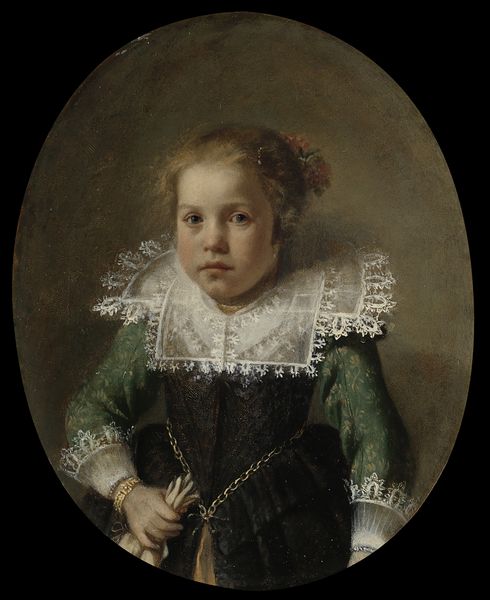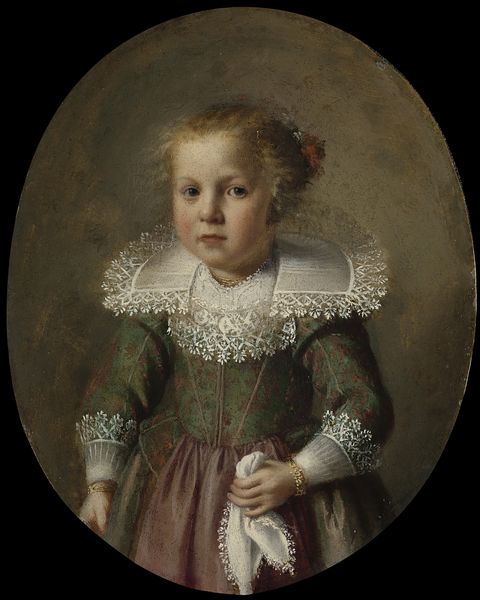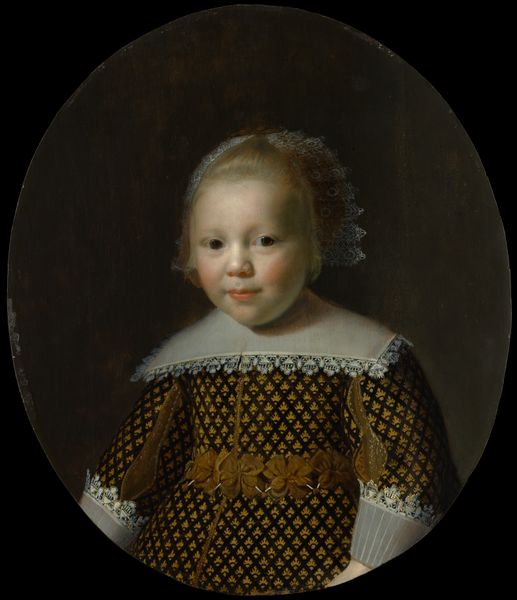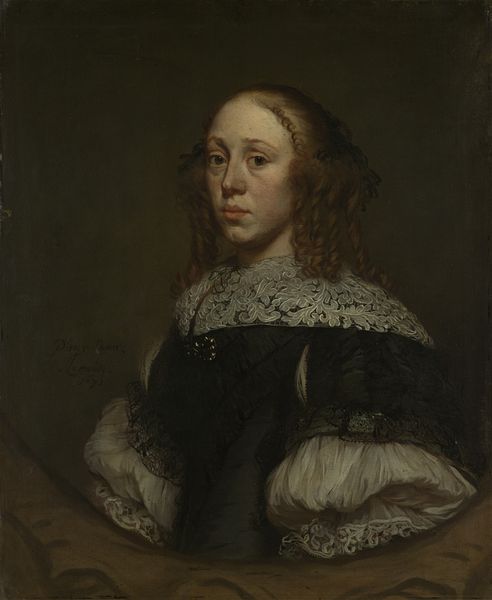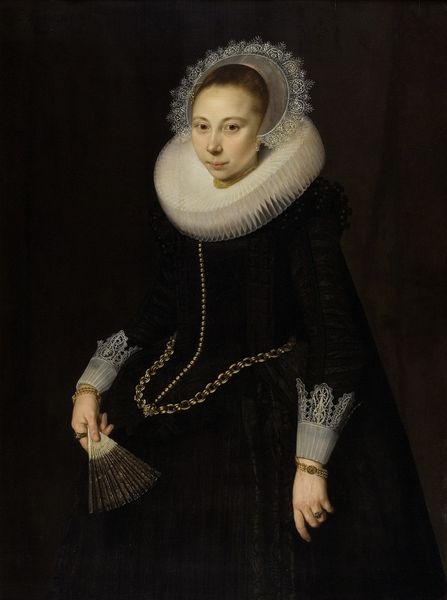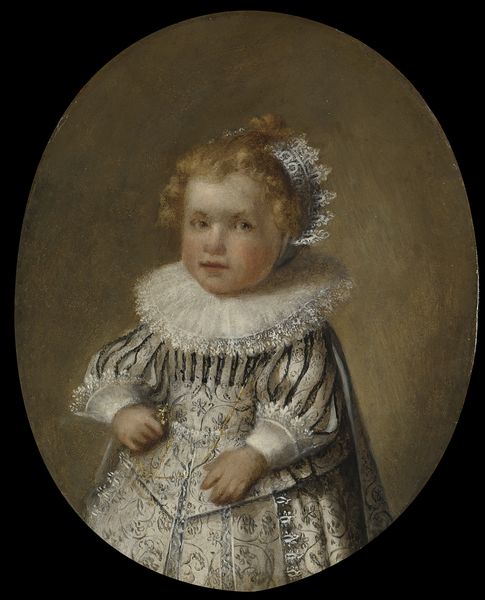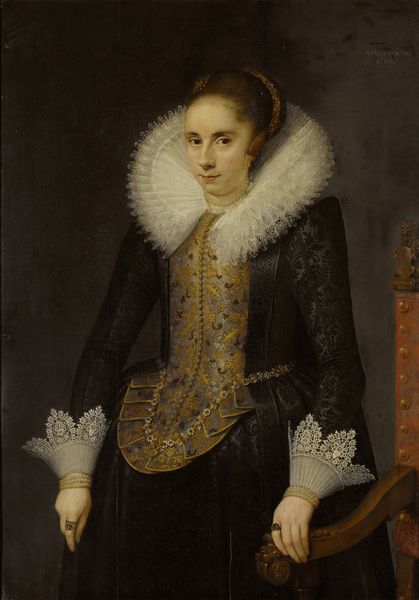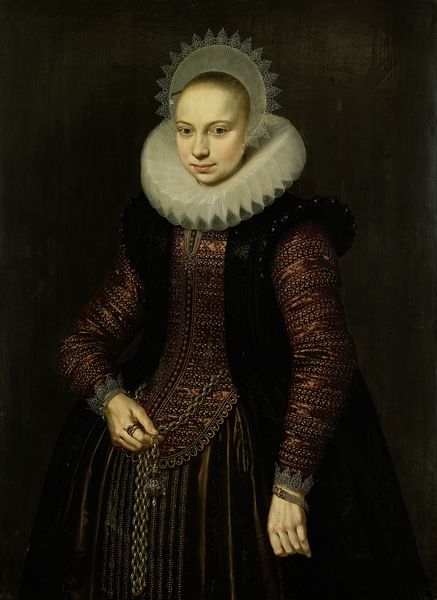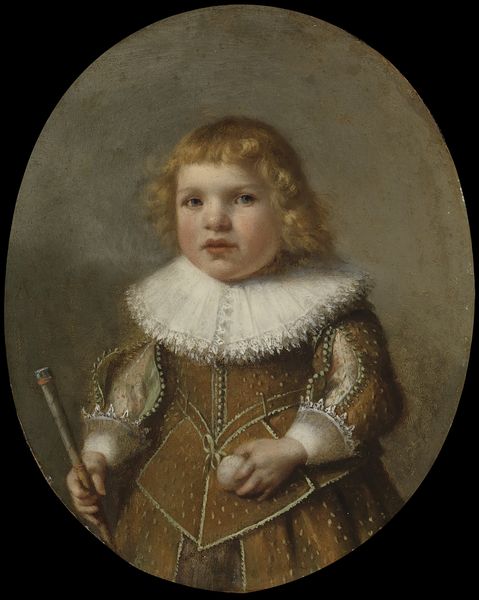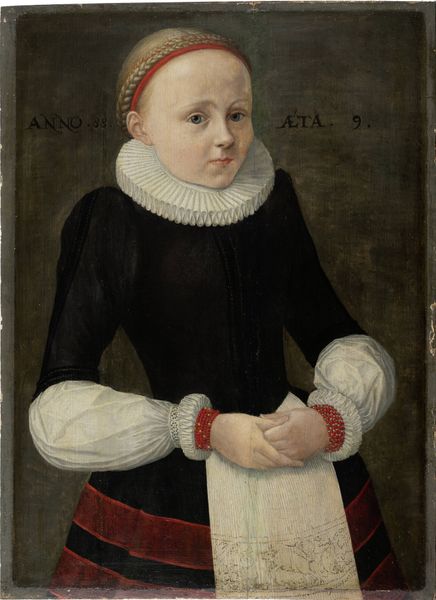
painting, oil-paint
#
portrait
#
baroque
#
painting
#
oil-paint
#
sculpture
#
genre-painting
#
portrait art
Dimensions: support height 15.8 cm, support width 12.8 cm
Copyright: Rijks Museum: Open Domain
Curator: This oil-on-panel portrait, titled "Portrait of Cornelia Cornelisdr van Esch," was completed in 1632 by an artist currently listed as Anonymous. It resides here in the Rijksmuseum. Editor: She seems so young! Almost like a doll, carefully positioned and dressed. There’s something a little unsettling about the formality, especially contrasted with her soft, youthful features. Curator: Indeed. The work demonstrates a clear command of Baroque portraiture conventions, evident in the meticulous rendering of details and the play of light and shadow, although the oval format perhaps softens some of its severity. Editor: It's interesting you say "softens." The lace collar practically cages her face, and her sleeves...they’re these ornate, almost weaponized embellishments. It's visually striking but makes me a little uneasy; is this about presenting status? Curator: Precisely. The artist emphasizes texture—the crispness of the lace, the sheen of the fabric, the delicate chain—all speaking to wealth and social standing. Semiotically, these elements operate as signs of Cornelia's position within Dutch society. The tight brushwork speaks volumes too. Editor: I keep getting drawn back to her eyes. They're not quite meeting ours. A subtle sense of detachment, or maybe apprehension? And her small bouquet positioned behind her head, looks as if she may have positioned herself. Perhaps even feeling uneasy in these elaborate trappings she's forced to wear. Curator: A valid observation. From a formalist perspective, her gaze disrupts a direct engagement, allowing the viewer to focus on the aesthetic elements rather than psychological depth. However, interpreting the slight tension you noted gives access to wider appreciation of this piece. Editor: I think her slight discomfort, combined with that incredible level of detail, actually makes the painting more poignant. It's not just a record; it's a whisper of a life caught between childhood and expectation. Curator: Ultimately, this portrait succeeds as both a demonstration of technical skill and an evocative historical artifact, prompting reflections on representation, identity, and the gaze. Editor: Absolutely. It’s a bit of a rabbit hole; staring at the portrait it prompts wider questions about life, duty, and childhood—an unexpected little gateway.
Comments
No comments
Be the first to comment and join the conversation on the ultimate creative platform.
